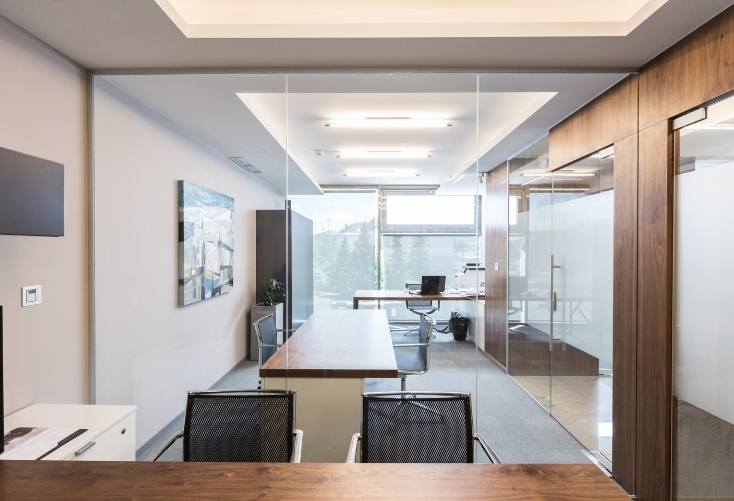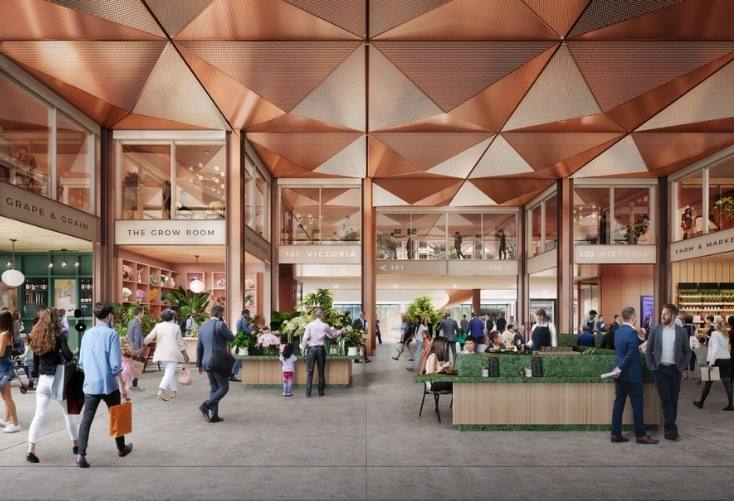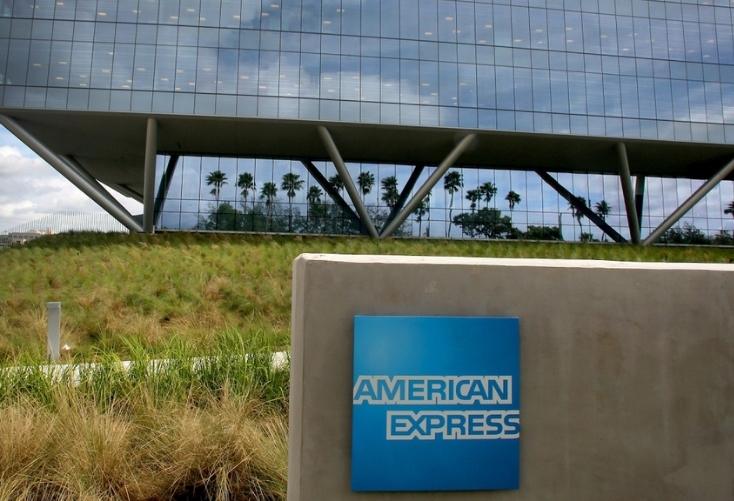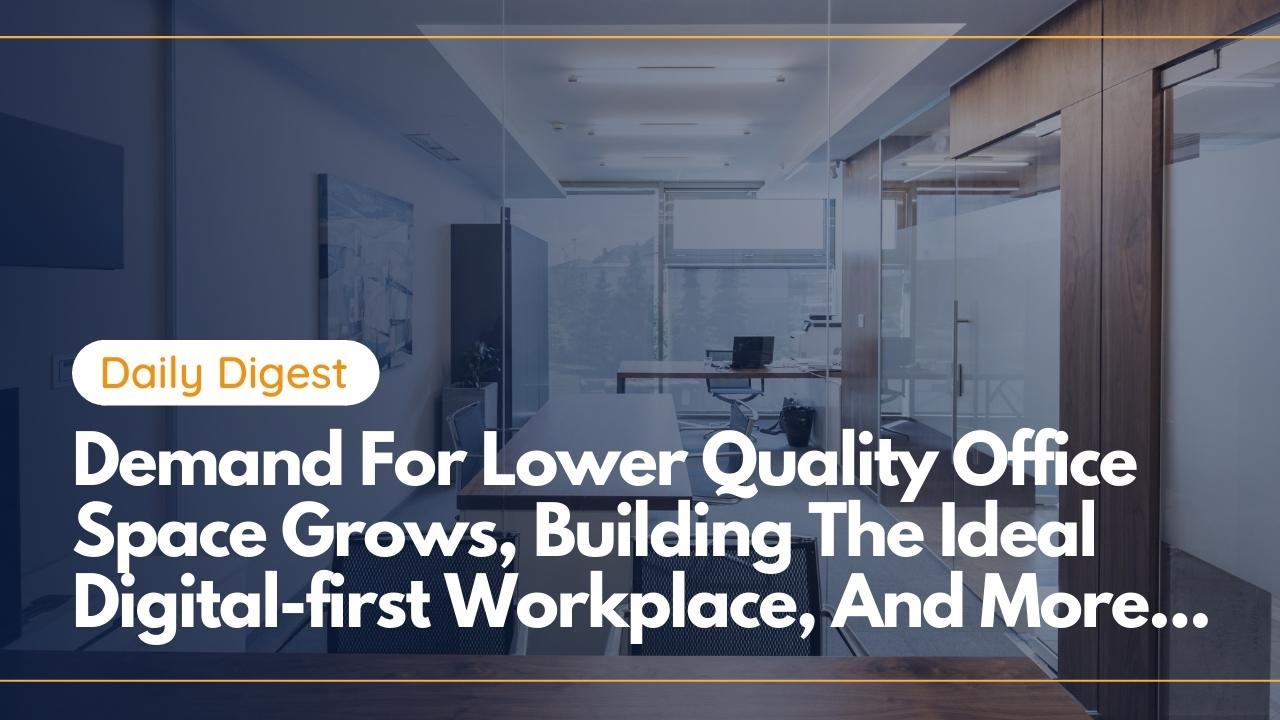Hand selected flexible workspace news from the most reliable sources to keep you ahead of the pack. We find all the latest news, so you don’t have to. Morning and afternoon updates. Stay in the know.
Here’s what you need to know today:
- WeWork Signs Deal With FabFitFun
- Demand For Lower Quality Office Space Grows
- Worries About Decreased Office Demand Diminishes
- Copenhagen Architecture Firm Will Design Its First London Building
- Building The Ideal Digital-first Workplace
- American Express To Adopt Hybrid Work Policy
WeWork Signs Deal With FabFitFun
WeWork has signed a new 55,000 square foot space for lifestyle products membership service FabFitFun in Los Angeles.
This new deal furthers the coworking company’s efforts to focus on large enterprise clients for long-term leases and more stability as it emerges from losses during the pandemic.
The lifestyle company’s new headquarters will be located at WeWork’s Pacific Design Center’s Green Building location, where it will take up an entire floor.
This marks WeWork’s largest sublease in Los Angeles as the company continues to accelerate its commitment to larger tenants.
During the beginning of the pandemic WeWork closed 120,000 square feet of its space at the Pacific Design Center’s Green and Red buildings.

Demand For Lower Quality Office Space Grows
A recent market report from Marcus & Millichap shows that class-A office space will take longer to recover compared to class-B and class-C space as companies no longer flee to the East Bay for discounted office space outside of San Francisco and San Jose.
Major metros have now adjusted their pricing and availability. Before the pandemic, prices in the East Bay and Oakland rang in 70% less than their surrounding major metros. However, increased availability may close the pricing gap.
That is why Marcus & Millichap anticipate that office vacancy will grow by just 80 basis points this year due to increased demand for lower-quality office space.
A Cushman & Wakefield report also found that San Francisco’s office market accounts for half of total market vacancy, where sublease space grew 587% from 2019 to 2020.
“Pre-pandemic there were 6.5 million square feet of tenants actively searching for space then technically falling to just over 3 million square feet, although even those searches were on pause,” said Robert Sammons, Senior Director of Research Northern California. “The figure has since recovered, now standing at a moderately robust 4.5 million square feet with active tours underway.”

Worries About Decreased Office Demand Diminishes
In its Global Investor Intentions Survey, CBRE finds that as companies plan for some type of centralized working, the real estate industry’s worries over decreased office demand is diminishing.
The survey showed that 72% of investors are expecting office demand to fall slightly, marking a stark shift in tone about the industry as a whole.
“More recently, investors and lenders in particular are warming up to the idea of financing office buildings across the country, realising that perhaps there was an overreaction to work-at-home and that, in fact, more companies are going to be returning to a work environment of some sort,” said Brian Stoffers, global president of CBRE’s debt and structured finance division.
For instance, Google recently announced it would reopen its offices in September and expects workers to be in the workspace at least three days a week.
However, although some form of return to the office is anticipated, CBRE added that the past year has still highlighted new needs of the workplace that include amenities that focus on the health of occupants.
Some companies plan to make this transition by adopting hub-and-spoke office arrangements, which will only slightly decentralize the workplace.
Using coworking and flexible office spaces, companies are trying to accommodate a more hybrid workforce. CBRE, for example, recently acquired a stake in coworking company Industrious in anticipation of this growth.

Copenhagen Architecture Firm Will Design Its First London Building
Copenhagen-based architecture firm Henning Larsen has revealed its first commission in London, a 47,000 square foot commercial office tower that aims to create a fully-engaging office space.
The tower, located on 105 Victoria Street near Buckingham Palace, will feature both social and physical activities. For instance, the space will include a covered public plaza it calls Village Square.
“Our ambition for the project is to create an active urban destination in the heart of London, a pocket of public space equal in energy and diversity to the city itself,” said Jacob Kurek, partner-in-charge at Henning Larsen.
Additionally, the building will feature a bicycle parking area, a gym, workshop and multipurpose event space. On the 10th floor, the building will have an indoor and outdoor “walk and talk track”. Even more, the building is anticipated to meet BREEAM’s ‘Outstanding” certification.
105 Victoria Street is being developed by property management firm BentallGreenOak on behalf of the Welput Fund and will be designed by Henning Larsen.

Building The Ideal Digital-first Workplace
Many companies are facing the challenge of generating the best possible digital-first workplace, especially on the heels of the massive transition to remote working arrangements.
One of the most important lessons of the past year has been the need for prioritizing the employee experience as there is a distinct parallel between productivity and workplace experience.
At Fortune’s Global Forum virtual conference, COO of Ceridian Leagh Turner said this shift finds employees with “more power than ever before.”
Additionally, President and COO of Activision Blizzard Daniel Alegre stated that the pandemic has accelerated the need for more employee wellbeing policies, such as daycare for working parents and medical services.
In terms of returning to the office, companies are turning to a more hybrid model that provides workers the option to come into the workplace or continue to work remotely.
Turner added that letting go of the misconception that in-person attendance equates productivity is essential for the future of work and that distance and technology can help actually bring teams together.
Anjali Sud, CEO of Vimeo, also stated that this arrangement can help open up opportunities for career promotions for women, and aid in achieving inclusion and diversity goals.

American Express To Adopt Hybrid Work Policy
American Express has announced it will allow employees to work from home for part of the week permanently as part of its return-to-the-office strategy.
Most employees in the U.S. and the U.K. will work in the office Tuesday through Thursday, with the choice to work from home Mondays and Fridays.
The company will allow workers to return to the office on September 13, and adopt its new hybrid policy during the week of October 4. Squeri said that the first three weeks of returning to the workspace would be a transitional period and be limited to 50% occupancy.
“We believe that being in the office together is an important part of what makes our culture special,” Steve Squeri, CEO of American Express. “We also want to keep aspects of the virtual environment that have been working well for us, such as greater inclusivity across our global colleague base, increased work-life balance, an enhanced digital mindset and cutting through bureaucracy to get things done.”
The memo added that those who worked remotely full-time prior to the pandemic will continue to do so. Those who need to be on-site for their jobs will need to come into the office daily.



 Dr. Gleb Tsipursky – The Office Whisperer
Dr. Gleb Tsipursky – The Office Whisperer Nirit Cohen – WorkFutures
Nirit Cohen – WorkFutures Angela Howard – Culture Expert
Angela Howard – Culture Expert Drew Jones – Design & Innovation
Drew Jones – Design & Innovation Jonathan Price – CRE & Flex Expert
Jonathan Price – CRE & Flex Expert














